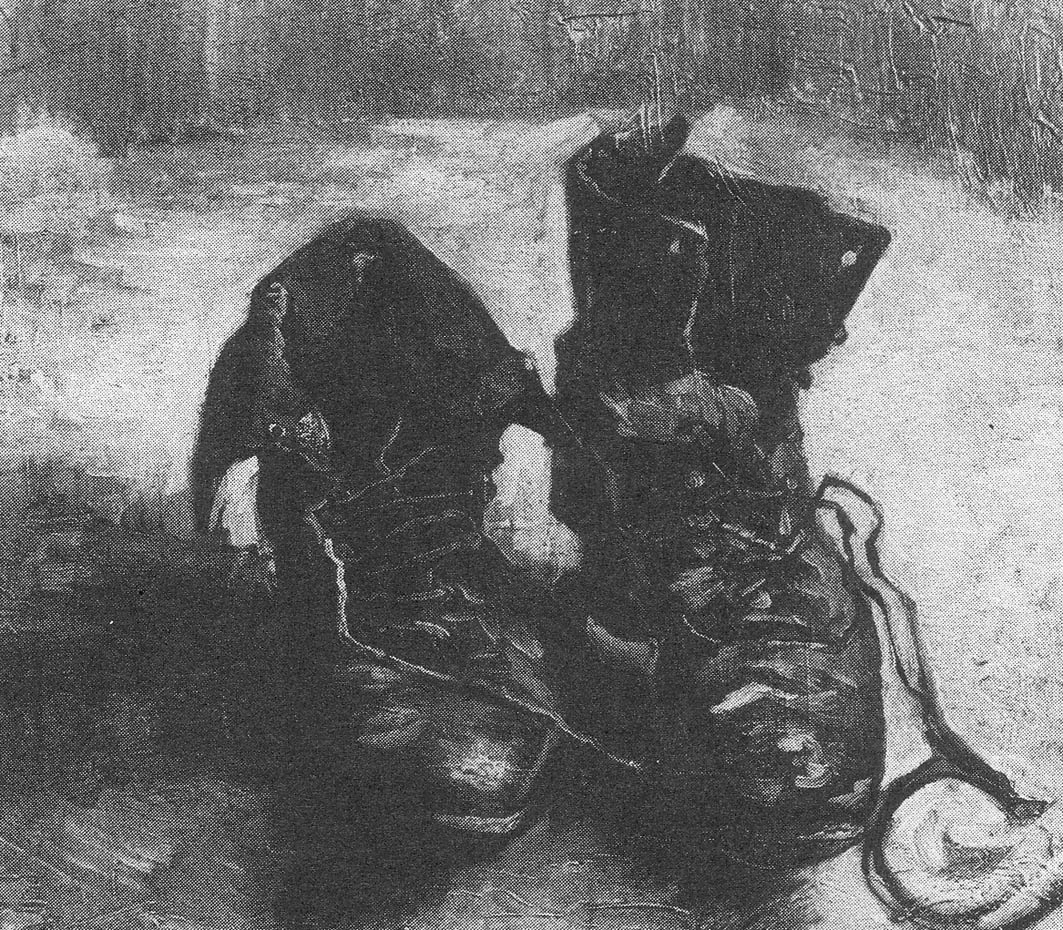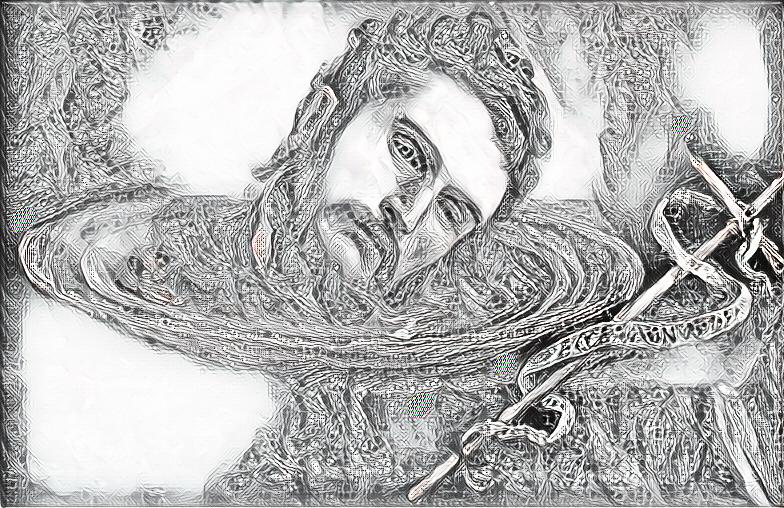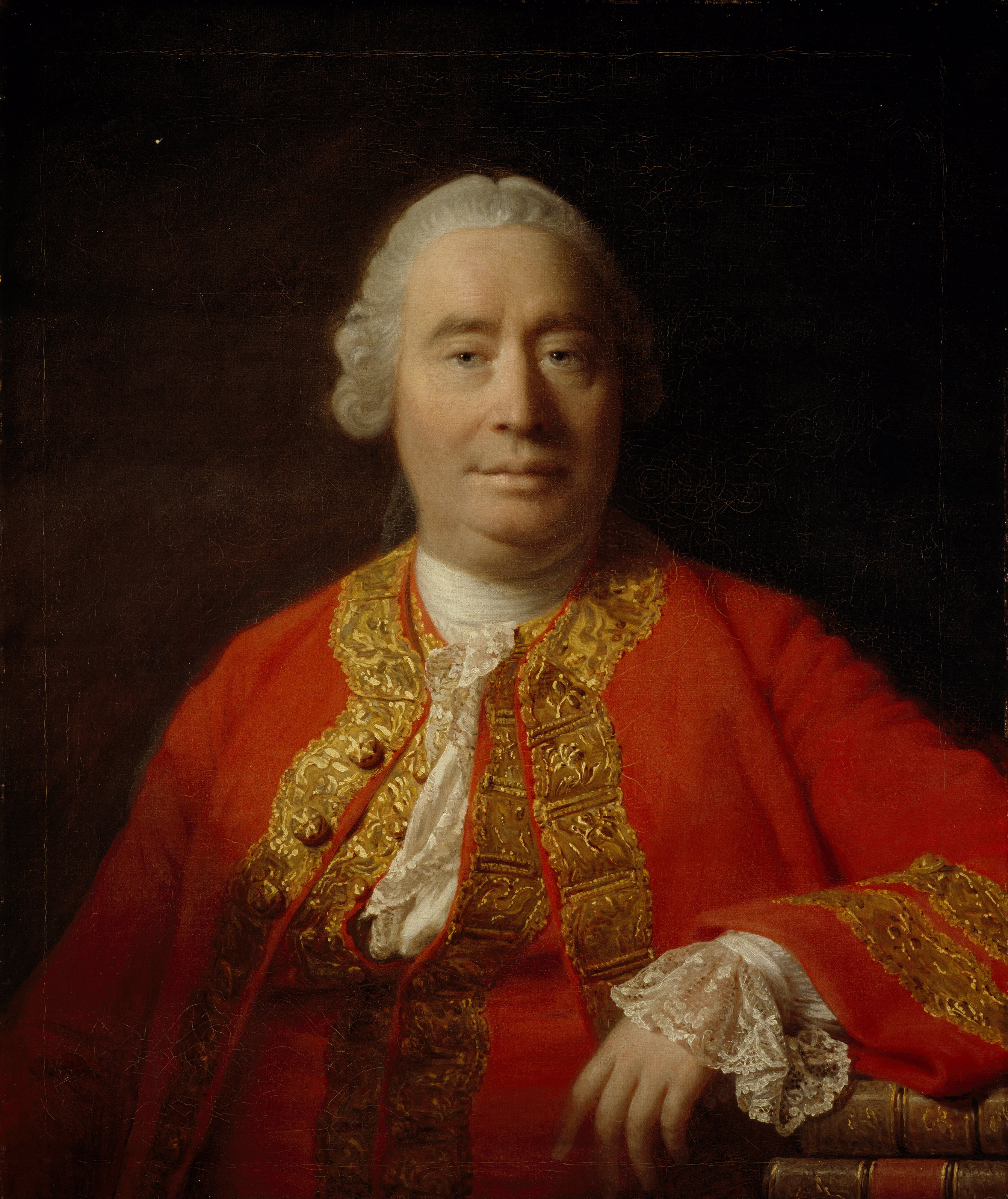This article is published in two parts. The second portion will appear on August 1.
I have set before you life and death: choose life. – Deuteronomy 30:19
Finitude is not the being-finished-off of an existent […] butting up against and stumbling over its own limit (its contingency, error, imperfection, or fault). Finitude is not privation. There is perhaps no proposition it is more necessary to articulate today, to scrutinize and test in all ways. Everything at stake at the end of philosophy comes together there: in the need of having to open the thought of finitude, that is, to reopen to itself this thought, which haunts and mesmerizes our entire tradition. – Jean-Luc Nancy, “Infinite Finitude”[1]
In his critique of Heidegger in Entre Nous, Lévinas complains that in his death-dominated and death-oriented thought there is no place for being-with-the-other. Sein-zum-Tode, being-unto-death, is a solitary enterprise, and the only Mitsein (being-with) which Heidegger envisages in the end boils down, as Lévinas maliciously remarks, to Zusammenmarchieren, marching-with: an army of isolated Daseins exercising their authenticity in their totally mobilised Todesbereitschaft, “readiness for death.”[2]
Lévinas is not the first and not the only Jewish philosopher who uttered his objection to Heidegger’s overestimation of death by drawing “out of the sources of Judaism.” In fact, there is a whole secret alliance of thinkers more or less explicitly inspired by this alternative tradition, which can be opposed to what Harold Bloom, himself a member of the group, called somewhat derisively “Heidegger and his French flock.”[3]
Despite all the differences between them, Franz Rosenzweig (provided we do not read him through the “Heideggerizing” lenses of Karl Löwith), Hannah Arendt, Emmanuel Lévinas, and Harold Bloom form an unofficial coalition of thinkers firmly opposed to the Heideggerian mode of doing philosophy solely under the auspices of death.
There is also one further feature which they share: the importance of the intellectual heritage of the Song of Songs. Rosenzweig based the whole second part of The Star of Redemption, devoted to revelation, on the grammar of the Song of Songs; Lévinas borrowed from the Song the notion of radical asymmetry between the subject and the Other; Bloom, by fusing it with Shakespeare’s sonnets, turned the Song into a dramatic canvas of his poetic love-hate relationship between the precursor and the ephebe; and it is possible that Hannah Arendt was inspired by its praise of love too.
In all these approaches, Shir ha-Shirim’s famous ‘love as strong as death’ (azzah kamavet ahava) lends itself to the philosophical speculation which offers a different conception of the finite existence, destined to die but no means exhausted by its lethal destiny; determined to resist the final verdict and gain an intense ‘life before death,’ marked by passionate relations with others. While, as Rosenzweig claims, the whole Western philosophical thought “from Ionia to Jena” (and beyond), is incurably infected with the thanatic (or even thanatophilic) tendency which perceives human finitude only through death – the Hebrew thought offers a striking alternative which substitutes love for death and makes it equally strong.
Heidegger’s Overestimation of Death
Let me begin with Rosenzweig who was never properly exposed to Heidegger’s own thought, but who nonetheless reacted to the general thanatic climate of his epoch, by trying to resist it. Rosenzweig’s main question, especially in his later period, is: Is it possible at all to think about our finitude differently, not under the auspices of death – the end, the goal, the final destiny, the ultimate verdict? The whole stake of Rosenzweig’s Neues Denken is to venture precisely such an endeavour: to try to think finitude positively.
Although often seen as a parallel to Heidegger’s analytics of Dasein,
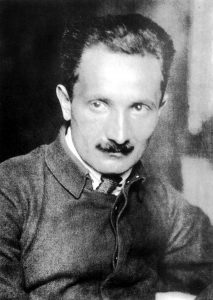
Rosenzweig’s New Thinking is actually the very opposite: despite many deceptively similar formulations, which also portray life as issuing towards death, it is uniquely concerned with the question which could never be properly answered by Heidegger, namely – Is life before death possible? Can living assert itself as such and not be immediately identified with “dying”?
The seeming paradox, therefore, consists in the defense of life as finite and as life: not the shadow of death which informs and paralyses the vital forces at the moment of their inception, but a full ‘healthy’ life which affirms itself as a separate category and simultaneously recognizes “sovereignty of death.”[4] The little book of Rosenzweig called Understanding the Sick and the Healthy endeavours to teach life the lesson of maintining itself in the paradox without solving or sublating it:
By teaching man to live again, we have taught him to move towards death; we have taught him to live, though each step he takes brings him closer to death […] There is no remedy for death; not even health. A healthy man, however, has the strength to continue towards the grave. The sick man invokes death and lets himself be carried away in mortal fear. In health, even death comes at the “proper” time (USH, 102-3).
All appearances to the contrary, this is not Heidegger’s Sein-zum-Tode. The little, yet decisive, difference lies in the emphasis Rosenzweig puts on the active resistance of life against death’s ‘chilling’ influence: on the way the “healthy” subject moves or continues towards death, despite the constant danger of “the paralysis of artificial death,” or the “death in life” which stops him from moving on. Despite death’s declared sovereignty, the life, which eventually succumbs to death, is not to learn anything from his “absolute Master”: it is to accept its overruling presence, but not to allow itself to be overwhelmed by it. Accept the verdict, but not the authority; take on the sentence, but not the wisdom which underlies it.
Death may thus be an end, even goal, but it is pictured here as a limit, which is not invited to the center of life, inmittens des Lebens, but delegated outside, only to intervene in its own “proper” time. Whereas in Heidegger’s original construction of “being-towards-death,” death penetrates into the very midst of Dasein; it is the very motor of its self-transcending ex-sistence, the teacher of the heroic decision-making which is as groundless, abyssal and pervaded by nothingness as death itself. Here, death is indeed a telos of life which runs its course according to this lofty submission, or as Jean-Luc Nancy calls it aptly, “sublime self-offering.”[5]
Death is let in in the middle of life as its thanatic guide; either in the existential function of a catalyst (heroic decision), or, after the Heidegger’s Kehre, as the demobilising event-horizon which works through the Gelassenheit, the quietistic anti-force of appeasement. None of it figures in Rosenzweig’s project of New Thinking which wants to give death its proper due, but absolutely nothing more: it wants to acknowledge the fact of the finite life without overestimating its impact on the process of living. Finding the right measure, the right ratio in death’s relationship with life, is the sole purpose here, which makes Rosenzweig’s endeavour opposite to Heidegger’s one which, from the perspective of Neues Denken, may indeed by characterised as a systematic overestimation of death.[6]
But before I proceed any further into the difference between Heidegger and Rosenzweig, I have to dispel one objection: that it is not Heidegger who systematically overestimates death, but rather all those commentators of his project (me included), who fail to see the vital function of Todesbewusstsein, having nothing to do with any existential paralysis. According to this line of thought, death in Heidegger’ Being and Time is just a neutral marker of finitude, while finitude as such works as a catalyzing and intensifying factor; all that passes through this narrow ‘opening,’ which is Dasein aware of its finite existence, acquires infinite urgency and pathos of absolute intensity.
As if in the inverted reading of Saint Paul, whom Heidegger studied assiduously, it is indeed the Paulian “glass,” but not “darkly,” not distorted by the finitude – rather a magnifying lense, or a slit in the camera obscura which condenses and refracts the dispersed light, thus forming a microcosmic image of the whole world. The Heideggerian “being-towards-death,” is thus not about “dying”: it is, just like in Rosenzweig, all about the intense living, conditioned into the existential intensity by the awareness of its finite limits.
Among many followers of Heidegger, who remain loyal to such positive account of the death-driven finitude, there is certainly Jean-Luc Nancy who sees his own project of “finite thinking” as the direct continuation of Heidegger’s original idea. Nancy takes for granted Heidegger’s presentation of Dasein as a finite ‘access’ to the world, thanks to which the world can ‘originate’ in all its infinite singularity; the slit of the “finite thinking,” which, precisely because of its “narrowing,” is also an “opening,” always new and original, of the countless multitude of beings. In Being Singular Plural, he thus defines the Heideggerian notion of finitude solely in terms of “access,” thus carefully avoiding any emphasis on death:
We only have access to ourselves – and to the world. It is only ever a question of the following: full access is there, access to the whole of the origin. This is called “finitude” in Heideggerian terminology. But it has become clear since then that “finitude” signifies the infinite singularity of meaning, the infinite singularity of access to truth. Finitude is the origin; that is, it is an infinity of origins. “Origin” does not signify that from which the world comes, but rather the coming of each presence of the world, each time singular.[7]
This interpretation may indeed be in harmony with Heidegger’s own declarations – according to which death is the fundamental possibility of human Dasein, intensifying the modal dimension of freedom, resolutness, and inventiveness – but it is incapable of reading Heidegger “against the grain.” The opposite interpretation, already informed by deconstructive suspicion, was offered by Maurice Blanchot, Kojeve’s pupil, who reread Heidegger’s ‘being-towards-death’ in a different, non-German, context and the whole mobilizing effect of death immediately evaporated, together with its alleged highest ‘possibility’ giving way to impossibility and incapacitation.
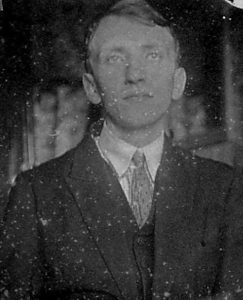
What primarily appeared as a Lichtung, a ‘narrowing’ still capable of an intesified “opening” and “access,” eventually turns into closure, aporia, blockage. What was meant as a slit, transposing extension into intensity, becomes yet another reiteration of the arch-old topos of death as the seal. What promised the authenticity of “living,” ultimately ends up as – ‘dying.’
Blanchot’s deconstruction consists in reversing the original Being and Time formula of death as the “possibility of impossibility” into its very opposite: the “impossibility of possibility.” Heidegger writes on the ultimate Möglichkeit:
The more unveiledly this possibility gets understood – the more purely does the understanding penetrate into Dasein as the possibility of the impossibility of any existence at all. Death, as possibility, gives Dasein nothing to be “actualized,” nothing which Dasein, as actual, could itself be… Being-toward-death, as anticipation of possibility, is what first makes this possibility possible, and sets it free as possibility.[8]
Prima facie, it would indeed appear that death works here as a positive and catalyzing factor. Death, the paradigmatic possibility defying any actualization, lies at the core of all other possibilities as possibilities: Dasein learns what it means to be able to become this or that by understanding the ability as such, the pure modal dimension of being. Yet Blanchot insists on inverting the Heideggerian formula to show the essential ungroundedness of its heroic resolutness.
The necessity of death cuts through all of Dasein’s projects and reveals their truth, as mere possibilities, as something possessing only a passing kind of being that pales in comparison to what is truly unconditional. Death, therefore, is not something possible. It is instead a primordial necessity that manifests itself as the impossibility of any possibility. For, if possibility is a possibility-to-actualization, then death, defying all actualization, negates also possibility. As such, death signals an altogether different way of existing, an alternative side of existence, which Blanchot designates in Space of Literature as a nunc stans of “dying,” captured in the never-ending present continuous:
It is the fact of dying that includes a radical reversal, through which the death that was the extreme form of my power not only becomes what loosens my hold upon myself by casting me out of my power to begin and even to finish, but also becomes that which is without any relation to me, without power over me—that which is stripped of all possibility—the unreality of the indefinite. I cannot represent this reversal to myself, I cannot even conceive of it as definitive. It is not the irreversible step beyond which there would be no return, for it is that which is not accomplished, the interminable and the incessant […] It is inevitable but inaccessible death; it is the abyss of the present, time without a present, with which I have no relationships; it is that toward which I cannot go forth for in it I do not die, I have fallen from the power to die. In it they die; they do not cease, and they do not finish dying.[9]
In Blanchot, already influenced by Heidegger’s Kehre, death becomes a factor that is decidedly less enabling and more disempowering, paralyzing. The impossibility of possibility announces from the start that all projects-actualizations undertaken by Dasein are futile; the (non)presence of death discloses the fundamental impossibility of the moment of decision in which Dasein resolves to be rather something than nothing. This resolution appears insignificant when confronted with the verdict of finitude; death, instead of mobilizing Dasein to activity, reveals the irremovable Nichtigkeit that pervades and therefore nichtet, annihilates, its inner possibilities.
Hence the step Dasein takes to make its decision to be something rather than nothing is, in fact, impossible. Overshadowed by the higher truth of death, every step emerges as false, as an error in the need of correction. By problematizing every decision as decision, death invalidates every possibility as possibility, and, above all else, it negates the basic ambition of Dasein to lead its own, truly authentic existence. “Dying” is an abyss of anonymity, in which it becomes impossible to say “I.” This very step, the most fundamental among Dasein’s projects, which strives to confirm the Jemeinigkeit of its Angst und Sorge, meets the strictest prohibition. There is no escape from the verdict of anonymity, from the ‘unreality of the indefinite’: “I never die but one dies,” says Blanchot (ibid., 241).[10]
Blanchot’s deconstruction of Heidegger’s Sein-zum-Tode is based on one fundamental suspicion: that Heidegger, despite all the declarations to the contrary, cannot leave the Dasein’s opening truly open, and instinctively presses towards the closure; that he, although ready to redefine human existence as an ‘open question,’ nonetheless cannot tolerate philosophically such indefiniteness and surreptitiously presents death as the missing essence of Dasein, which is now identified as “dying.” Blanchot’s reading is thus faithful to the arcana of the deconstructive art, as formulated by Paul de Man. Heidegger’s text as performance does precisely the opposite to its intended and stated meaning, while death becomes the crux of the major aporia.
Death is meant to open Dasein and maintain it in its indefinite realm of possibilities, whereas in fact it closes and reduces its indefiniteness, by submitting Dasein to the impending necessity of dying, its “apodictic evidence” (BT, 309): “Dasein, as thrown Being-in-the-world, has in every case already been delivered over to its death. In being towards its death, Dasein is dying factically and indeed constantly, as long as it has not yet come to its demise” (BT, 303); “… ‘ending,’ as dying, is constitutive for Dasein’s totality” (BT, 284); “Dying is not an event; it is a phenomenon to be understood existentially…” (ibid.); “Factically, Dasein is dying as long as it exists…” (BT, 295).
Blanchot’s suspicion, therefore, consists in not taking Heidegger for face value when he declares that he is giving us the true and definite account of the proper Sein-zum-Tode. In fact, what he does is the very opposite: it is rather the description of Sein-gegen-Tode, in which Dasein not so much adopts the death-dominated mode of being (which would be “dying”) as defends itself against the verdict, by resolutely trying to become something against the tide of overwhelming abyssal nothingness. Let’s have a closer look at Heidegger’s quote from Being and Time:
Death, as possibility, gives Dasein nothing to be ‘actualized,’ nothing which Dasein, as actual, could itself be. It is the possibility of impossibility of every way of comporting oneself toward anything, of every way of existing. In the anticipation of this possibility it becomes ‘greater and greater’; that is to say, the possibility reveals itself to be such that it knows no measure at all, no more or less, but signifies the possibility of the measureless impossibility of existence. In accordance with its essence, this possibility offers no support for becoming intent on something, ‘picturing’ to oneself the actuality which is possible, and so forgetting its possibility. Being-towards-death, as anticipation of possibility, is what first makes this possibility possible, and sets it free as possibility (BT, 307).
This is Heidegger’s own emphasis, enhancing the active and the positive: being, making, possibility, which can never be forgotten as such and thus open Dasein “measurelessly to ever “greater and greater” tasks. But for Blanchot, the emphasis lies elsewhere, on negativity and closure: nothing, impossibility, non-actualization. The “impending” (BT, 294) and “measureless” impossibility of existence, which is forbidden to be pictured in any actualized shape (all affinities with the “jealous God” of the Second Commandment non-accidental!), immediately dissolves any actuality Dasein has happened to assume into nothing.
Having been “delivered over” to this new deadly divine, Dasein can never assert itself in what it actually is, but is always forced to be-no-longer, to undergo constant and constitutive “dying” in the service of this unpictureable and measureless abyss that defies any actualization. Thus, when read “theologically” (and this is certainly Blanchot’s perspective), Heidegger’s death steps into the traditional role of the deity in relation to which no other being can assert itself in existence and has to sacrifice its actuality; the possibility so immense and infinite that it excludes any finite actualization.
assert itself in what it actually is, but is always forced to be-no-longer, to undergo constant and constitutive “dying” in the service of this unpictureable and measureless abyss that defies any actualization. Thus, when read “theologically” (and this is certainly Blanchot’s perspective), Heidegger’s death steps into the traditional role of the deity in relation to which no other being can assert itself in existence and has to sacrifice its actuality; the possibility so immense and infinite that it excludes any finite actualization.
And, indeed, Heidegger says: “Anticipation discloses to existence that its uttermost possibility lies in giving itself up, and thus it shatters all one’s tenaciousness to whatever existence one has reached” (BT, 308; my emphasis). Therefore, if Dasein decides on becoming something, the “anticipatory resoluteness,” formed in face of the impending certainty of death, immediately “takes it back,” because death, as “taking back” everything, is not just an end of the process, but its very medium, the constant and constitutive ‘dying’: “The certainty of resolution signifies that one holds oneself free for the possibility of taking it back – a possibility which is factically necessary” (BT, 355).
And even if Heidegger adds immediately that such certitude of “taking back” and “shattering” only strengthens the resolute will to repeat itself, Blanchot will treat it merely as a defensive evasion of what to him seems inevitable, namely the dissolution into “irresoluteness.” To be authentic, for Blanchot, is not to leap into decisions resulting in passing actualizations, but to stay “dying’” and “irresolute,” to let death truly take power over life – again, according to Heidegger’s own letter: “Anticipatory resolutness is not a way of escape, fabricated for the ‘overcoming’ of death; it is rather that understanding which follows the call of conscience and which frees for death the possibility of acquiring power over Dasein’s existence and of basically dispersing all figutive Self-concealments” (BT, 357).
For Blanchot, all decisions to be rather something than nothing belong to the realm of “fugitive Self-concealments,” fabricated not zum but gegen Tode. If there is an “unshakable joy” in serving “Death, the absolute Master” (we have to remember that in his reading of Heidegger, Blanchot already fuses him with Hegel whom he learned through Kojeve), then it consists in staying rather nothing than something.
And again, Heidegger provides the textual evidence: “The ecstatical character of the primordial future lies precisely in the fact that the future closes one’s potentiality-for-Being […] Primordial and authentic coming-towards-oneself is the meaning of existing in one’s ownmost nullity” (BT, 379; my emphasis). In the end, it is precisely this “ownmost nullity” which substitues for the initially open essence of Dasein.
Agata Bielek-Robson is Professor of Jewish Studies at the University of Nottingham. She is the author among many works of Judaism in Contemporary Thought: Traces and Influence (Routledge, 2014); Jewish Cryptotheologies of Late Modernity: Philosophical Marranos (Routledge, 2014) and The Saving Lie: Harold Bloom and Deconstruction (Northwestern University Press, 2011).
__________________________________________________
[1] Jean-Luc Nancy, The Sense of the World, trans. Jeffrey S. Librett, Minneapolis: University of Minnesota Press, 1997, p. 29.
[2] “In Heidegger, the ethical relation, the Miteinandersein, the being-with-another-person, is only one moment of our presence in the world. It does not have the central place. Mit is always being next to… it is not in the first instance the Face, it is zusammensein [being-together], perhaps zusammenmarschieren [marching-together]”: Emmanuel Levinas, “Philosophy, Justice, and Love,” in Entre Nous, Thinking of The Other, trans. Michael B. Smith and Barbara Harshav, New York: Columbia University Press, 1998, p. 116 (Entre Nous: Essays sur le penser-a-l’autre, Editions Grasset & Fasquelle 1991).
[3] Harold Bloom, The Anxiety of Influence. A Theory of Poetry (With a New Preface on Shakespeare). New Haven & London: Yale University Press, 1997, p. xxvii.
[4] Franz Rosenzweig, Understanding the Sick and the Healthy: A View of World, Man, and God, trans. Nahum Glatzer, Cambridge, MA: Harvard University Press, 1999, p. 103. Later in the text as USH.
[5] Jean-Luc Nancy, A Finite Thinking, ed. Simon Sparks, Stanford: Stanford University Press 2003 (Une pensee finie, Editions Galillee 1990), p. 75.
[6] That it is the case may be well testified by Alphonso Lingis who in his Heidegger inspired book, Deathbound Subjectivity, sings an unceasing praise of death: “That the human spirit is mortal, deathbound, that death does not befall our existence by accident or as a catastrophe, but that our existence, of its own nature, projects itself, with all its forces, unto its death – this conviction is at the core of Heidegger’s thought. Death is the law – the imperative – of our existence […] that the deathbound propulsion of our existence is the spirit itself is what makes our movements comprehending and our existence exultant, ecstatic […] Death is the law – the ordinance of our existence”: Alphonso Lingis, Deathbound Subjectivity, Bloomington: Indiana University Press, 1989, p. 109.
[7] Jean-Luc Nancy, Being Singular Plural, trans. Robert D. Richardson and Anne E. O’Byrne, Stanford: Stanford University Press, 2000, p. 15. (Etre singular pluriel, 1996).
[8] Martin Heidegger, Being and Time, trans. John Macquarrie and Edward Robinson, Oxford: Blackwell, 1962, p. 307. Later in the text as BT.
[9] Maurice Blanchot, The Space of Literature, trans. Ann Smock, Lincoln & London: Nebraska University Press, 1982, p. 106; 154-5, my emphasis. Yet another version of the deconstructive interpretation of Heidegger’s formula is offered by Giorgio Agamben in his reading of Melville’s Bartleby, where it is the latter’s ‘formula’ (I’d prefer not to) which helps to explain how death may indeed be a possibility of impossibility – that is, only as ‘potentiality to not-be.’ Only when possibility becomes separated from the urge towards actualisation, can ‘dying’ become the teacher of the right kind of existing faithful to a pure potentiality. See Giorgio Agamben, “Bartleby, or on Contingency,” in Potentialities, trans. Daniel Heller-Rozen, Stanford: Stanford University Press, 1999, pp. 243-274.
[10] In Aporias, a book explicitly devoted to the raise of thanatology as a properly philosophical discipline, Derrida comments on the significance of the ‘turn’ made by Blanchot: “Whan Blanchot constantly repeats – and it is a long complaint and not a triumph of life – the impossible dying, the impossibility, alas, of dying, he says at once the same thing and something completely different from Heidegger. It is just a question of knowing in which sense (in the sense of direction and trajectory) one reads the expression of the possibiliby of impossibility. If death, the most proper possibility of Dasein, is the possibility of its impossibility, death becomes the most improper possibility and the most ex-propriating, the most inauthenticating one”: Jacques Derrida, Aporias, trans. Thomas Dutoit, Stanford: Stanford University Press, 1994, p. 77.
